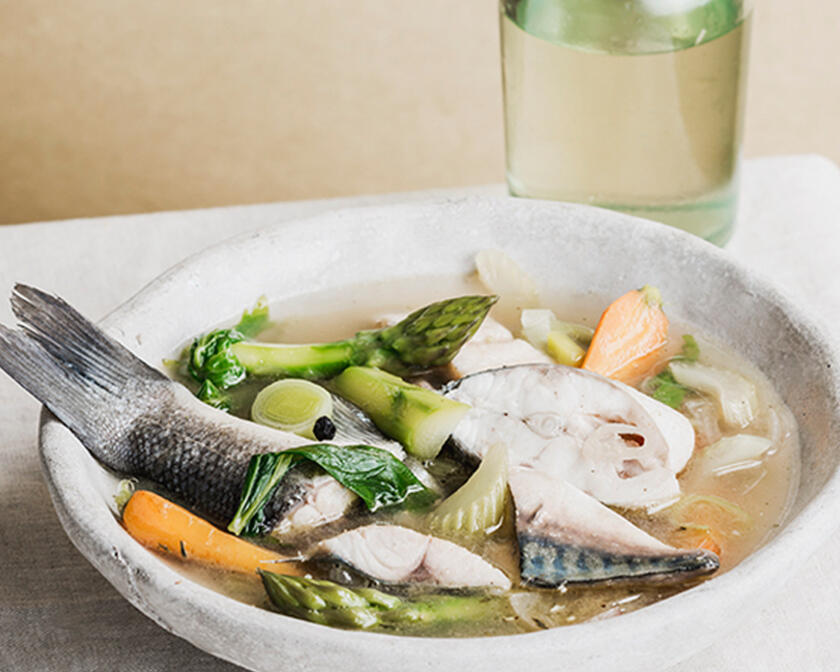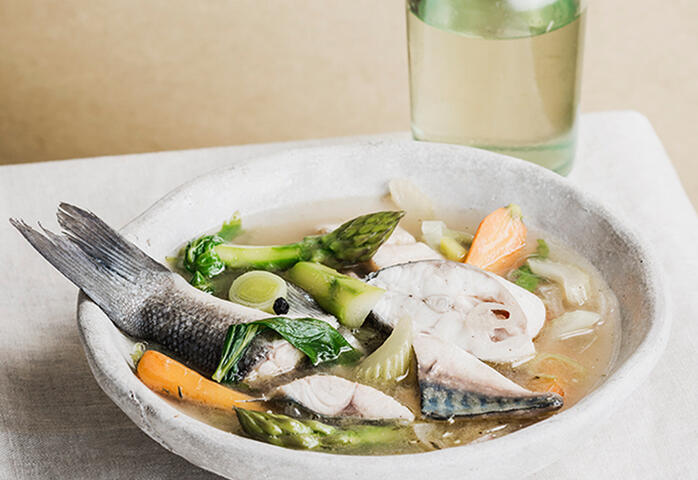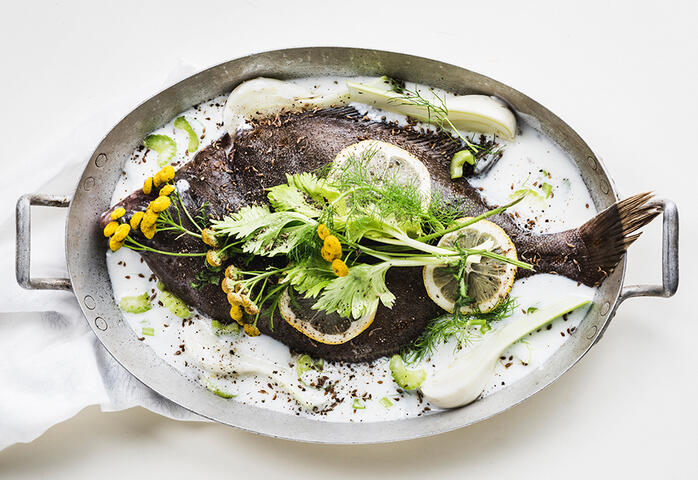
Did you know? A research project is currently conducted by AquaErf to market burbot as a sustainably and locally farmed fish destined for consumption.
Sustainable fish soup
In comparison with present-day cookery books, it is remarkable that medieval cookery books contain considerably more recipes for freshwater fish than for marine fish. In the 15th century, fish was used creatively in all possible forms and combinations: recipes ranged from common pastries containing pike, cod and sea bass to luxurious pancakes with caviar and fish sausage. Waterzooi (stew) made from local bycatch was a very popular dish since it was a one-pot meal that offered a virtually endless variety of fish combinations.
In the month of May, the Van Eyck brothers would often have eaten fish. Whether it had been caught in rivers or in the sea depended on the available budget. Smaller species from the coastal waters and estuaries such as sprat, anchovy, smelt and flounder were inexpensive. Larger species such as halibut and cod were caught in northern seas and were more prestigious.
Get started
Bycatch stew

Ingredients for 4 servings:
- 2 kg North Sea fish (not cleaned) (depending on the season or catch): flounder, hake, lesser spotted dogfish, horse mackerel, ling, pollack, tub gurnard, megrim, haddock, pouting, goatfish, herring, etc.
- 400 g seasonal vegetables: e.g. carrot, celery, asparagus, cauliflower, legumes, leek, early potatoes
- 2 dl white wine
- 6 dl stock
- 6 dl water
- green herbs as desired for garnishing
- Optionally, the stew can be bound at the end with 2 eggs and 4 dl cream
- Select local fish for this classic Ghent dish.
- Clean the fish or ask your fishmonger to clean it for you. Begin by scaling the fish and then remove the entrails. Cut the fish in pieces (head/tail/belly/fillet) so that all pieces can be used for this stew.
- Clean the vegetables and chop them finely. Chop the pieces of fish into smaller bits.
- Put the vegetables, fish, white wine and stock in a casserole, add 6 dl water and gently cook for 7 minutes.
North Sea fish cooked in buttermilk

Ingredients for 4 servings:
- 2 kg North Sea fish (not cleaned) (depending on the season or catch): megrim, flounder, haddock, whiting, brill, small sea bass, ray, etc.
- 60 g coarse salt
- 1.4 l buttermilk
- 20 g anise seed
- 200 g celery (finely chopped)
- 200 g fennel (finely chopped)
- 4 slices of bread
- salted butter for spreading
- Clean the fish or ask your fishmonger to clean it for you. Begin by scaling the fish and then remove the entrails.
- Salt the fish for about 30 minutes. Use coarse salt.
- Rinse off the salt, put the fish in a pot and cover in buttermilk.
- Add the anise seed and the chopped vegetables.
- Leave in the refrigerator overnight.
- Put the fish in a pot on a low heat and bring to a temperature just below the boiling point.
- Take the fish from the cooking liquid and check whether it is done.
- Serve with bread and salted butter; the perfect snack then and today.
You can finish in all sorts of manners: pure as a stew or in a hearty pancake with spinach and nut cream. In addition, you can supplement the dish with fresh herbs, chopped eggs, fish eggs, verjuice, nuts, shellfish, shrimps, etc.